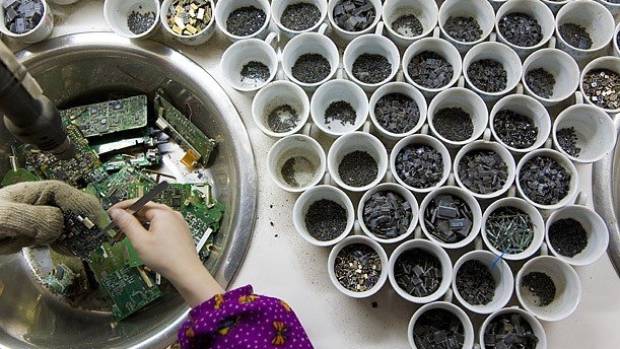UN Criticizes New Zealand on E-Waste
![]()
UN-backed body ‘right’ to single out New Zealand as an e-waste laggard
New Zealand deserves being “named and shamed” in a United Nations-backed report on e-waste, says campaigner Laurence Zwimpfer.
Zwimpfer helped organise events to collect and recycle e-waste prior to 2010, and is also operations manager of the 20/20 Trust, a charity which aims to tackle the digital divide.
The International Telecommunications Union (ITU) singled out New Zealand and Australia in report published overnight on Wednesday, saying they together produced the highest volumes of e-waste in the world while noting they had among the lowest documented rates for recycling.
The ITU, based in Geneva, is the United Nations’ agency for information and communication technology.
It estimated New Zealanders were responsible for generating just over 20 kilograms of e-waste per person each year, and Australians more than 23kg.
That compares with a figure of about 20kg per person in the United States and Canada, and 16.6kg in Europe.
The picture it painted was worse when it came to recycling.
Almost two-thirds of the world’s population live in the 61 countries that have national e-waste laws.
Worldwide, about 20 per cent of the 44 million tons of e-waste produced last year was officially documented as being recycled, the ITU said.
In the US, which is often slated as having a “throw-away culture”, the figure was 22 per cent.
But only 7.5 per cent of e-waste fell into that category in Australia, while in New Zealand the figure was “zero”, as the country is one of the few developed countries not to have any laws to manage to e-waste.
That does not mean that no e-waste was in fact recycled – New Zealand has private companies that specialise in collecting and dismantling computers and other electronic equipment, as well as a voluntary scheme to encourage the recycling of smartphones.
But the ITU said that as New Zealand was “still in the process of developing a national scheme to deal with the e-waste issue”, most e-waste was being disposed of in landfills.
Zwimpfer said industry had been ready to play its part in promoting recycling after free eDay recycling events closed in 2010, with a scheme drafted up.
But the Government had “totally less us down” by failing to support those efforts with regulation “as they let down the tyre industry as well”, he said.
“We are being named and shamed – we blooming well deserve it.”
The ITU defined e-waste broadly for the purposes of its report, including whiteware and electronic toys as well as the likes of laptops, televisions and computers.
The Environment Ministry has the power to impose or to endorse industry-run “product stewardship schemes” to manage waste streams.
But a report commissioned by the Environment Ministry in 2015 said it couldn’t be proven that the existing management of e-waste in New Zealand caused significant harm to the environment or that significant benefits could be achieved through such regulation.
The previous government provided some financial support for the recycling of old televisions around the time that analogue television broadcasts were turned off in 2012 and 2013.
But its private-sector partner in that initiative, recycling firm RCN, went broke in 2014.
The ministry indicated it was preparing comment on the ITU report on Thursday, but that was not forthcoming.
ITU Geneva-based spokeswoman Vanessa Gray said that as New Zealand did not produce official data on e-waste, it had estimated how much Kiwis were likely to be producing based on estimates of how many items had been sold and how long they were likely to last.




Leave a Comment
Want to join the discussion?Feel free to contribute!